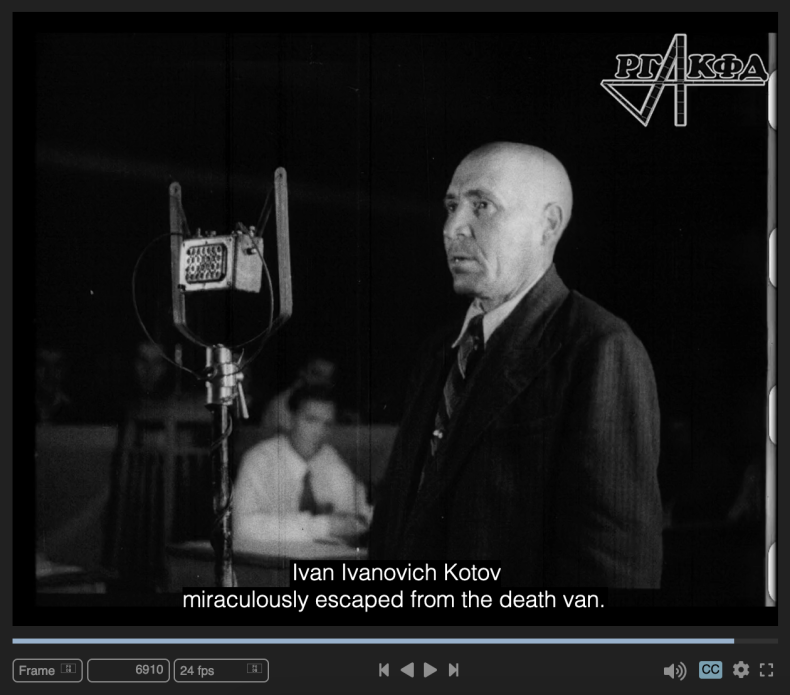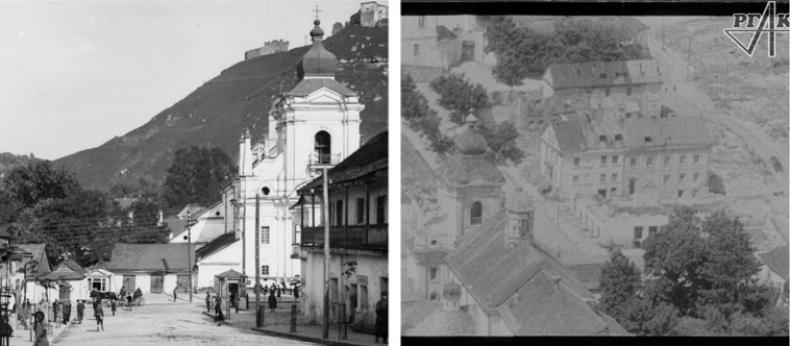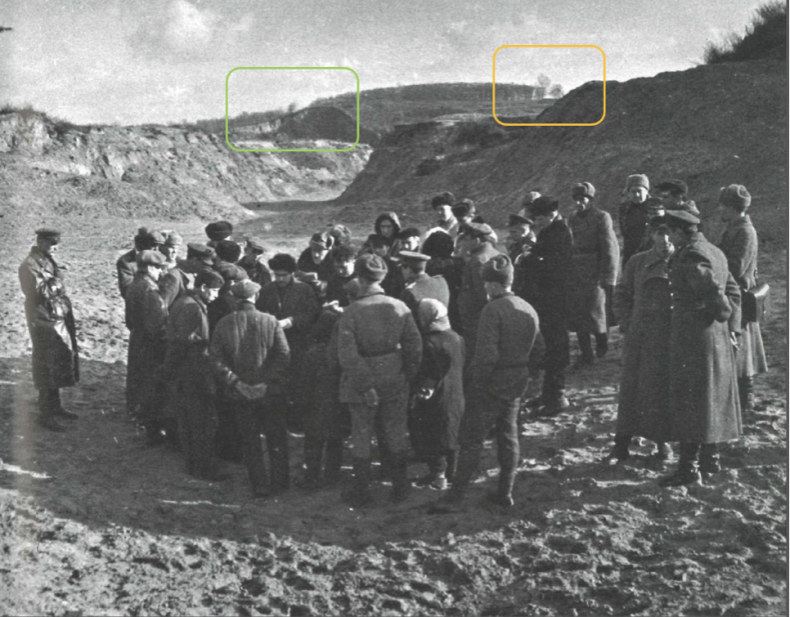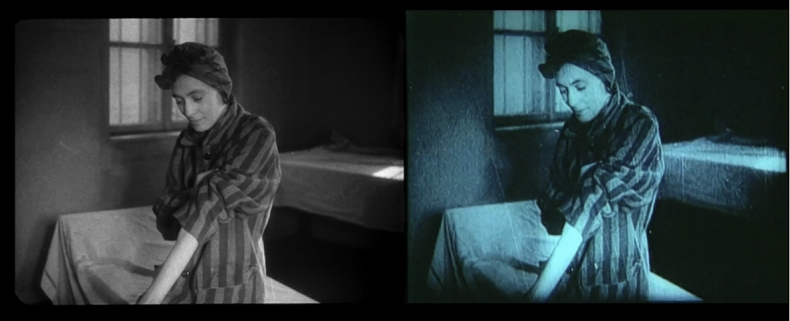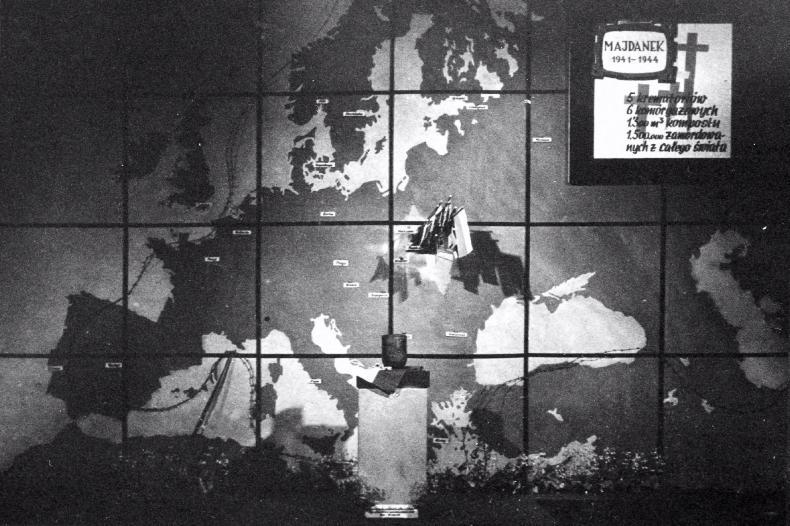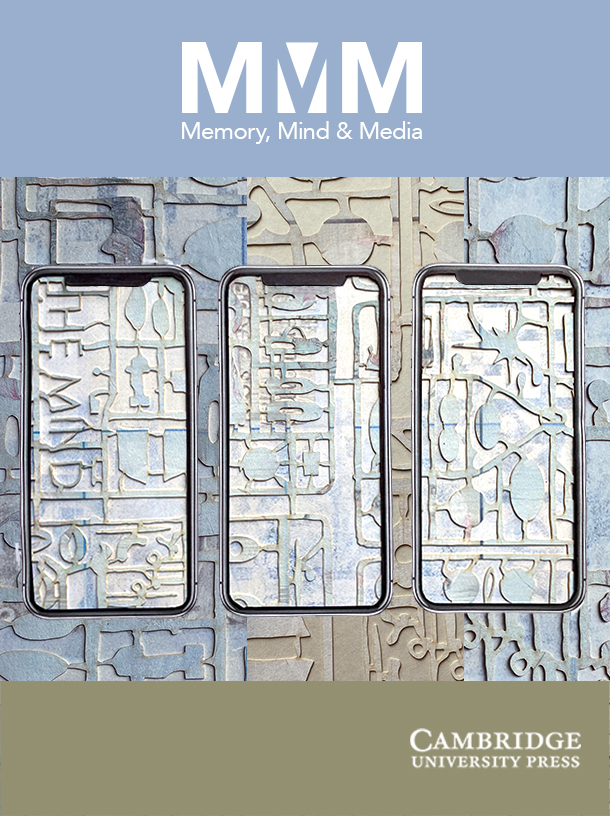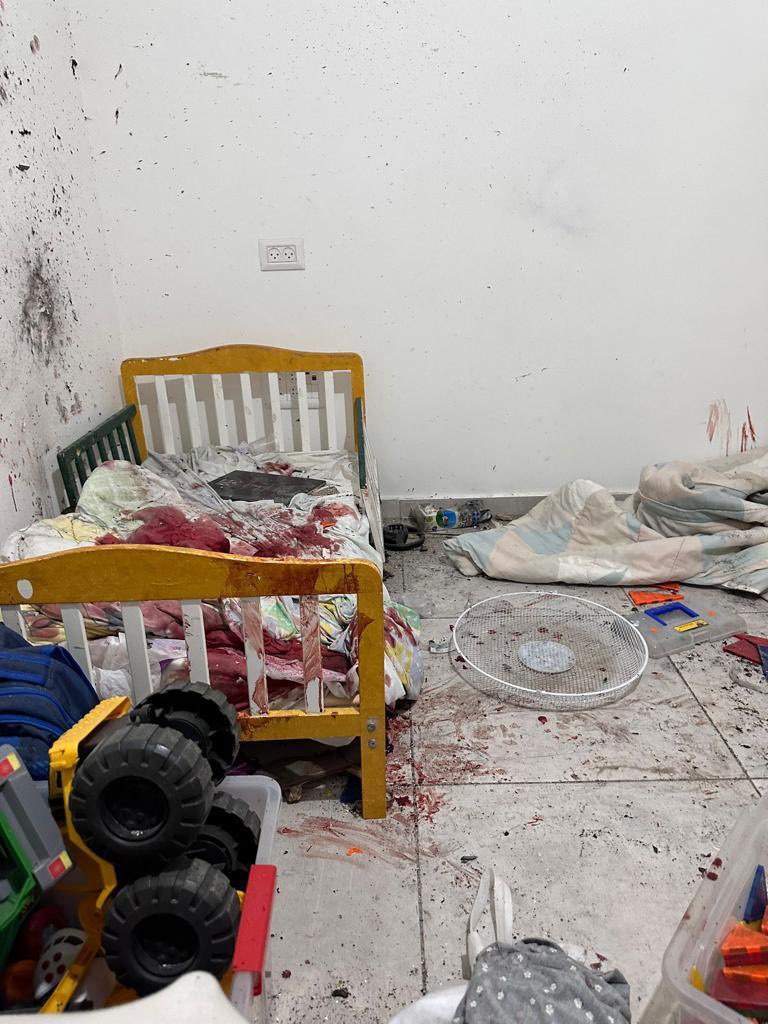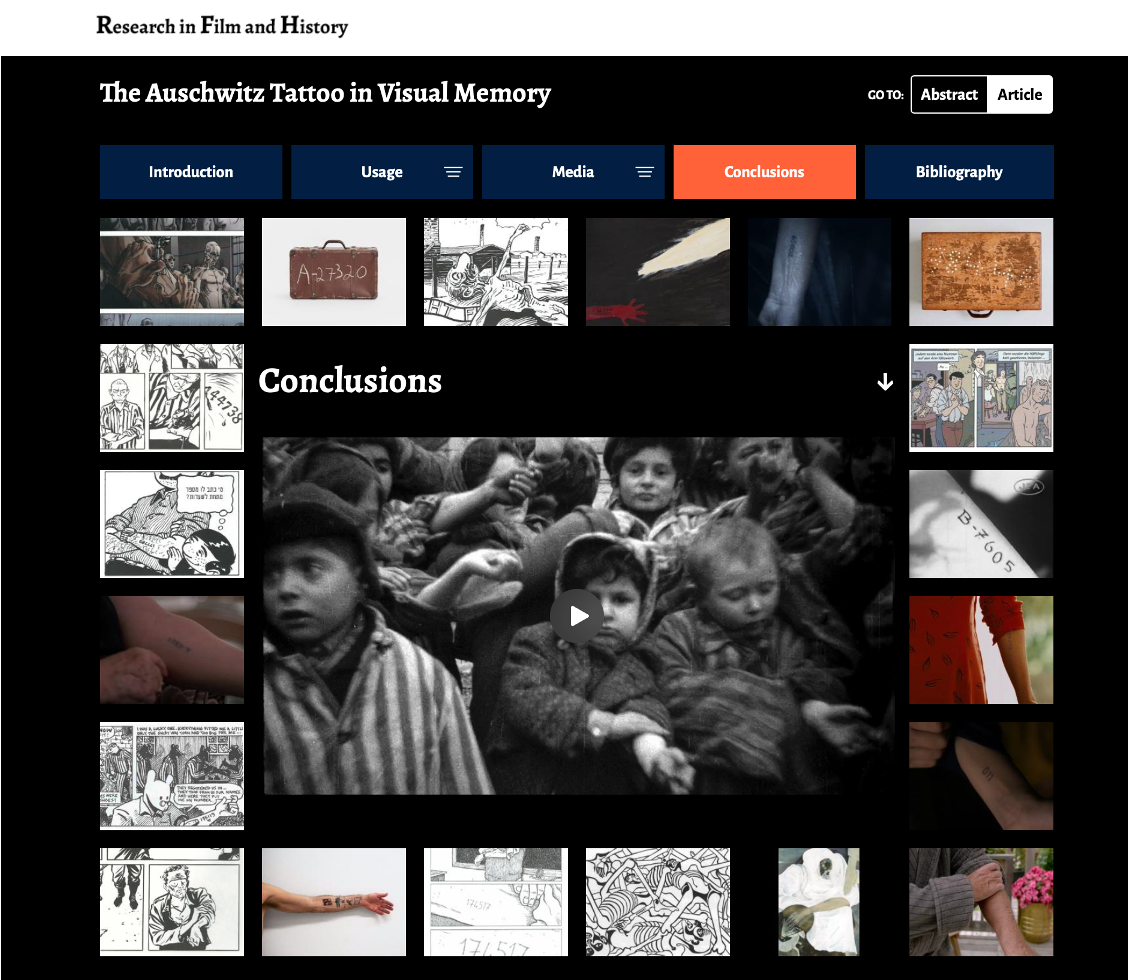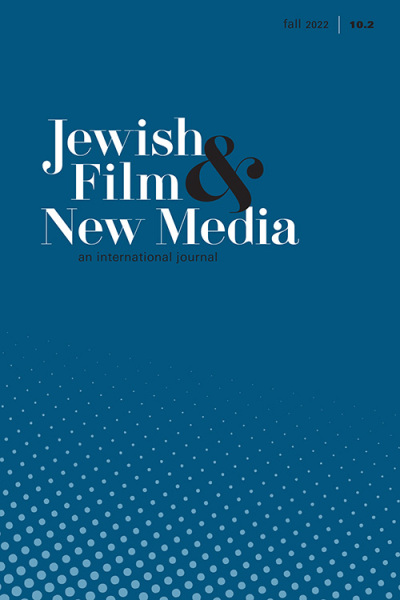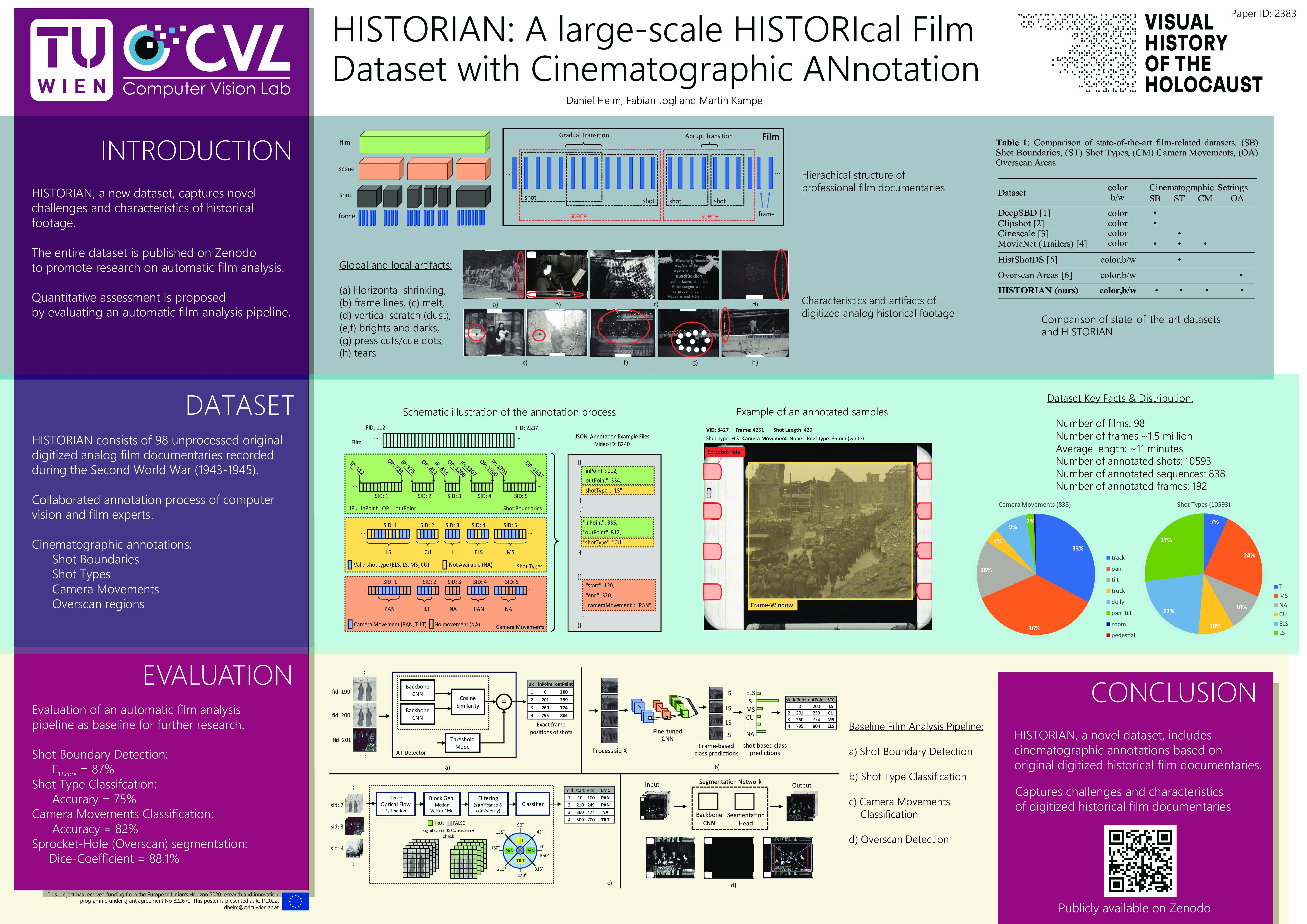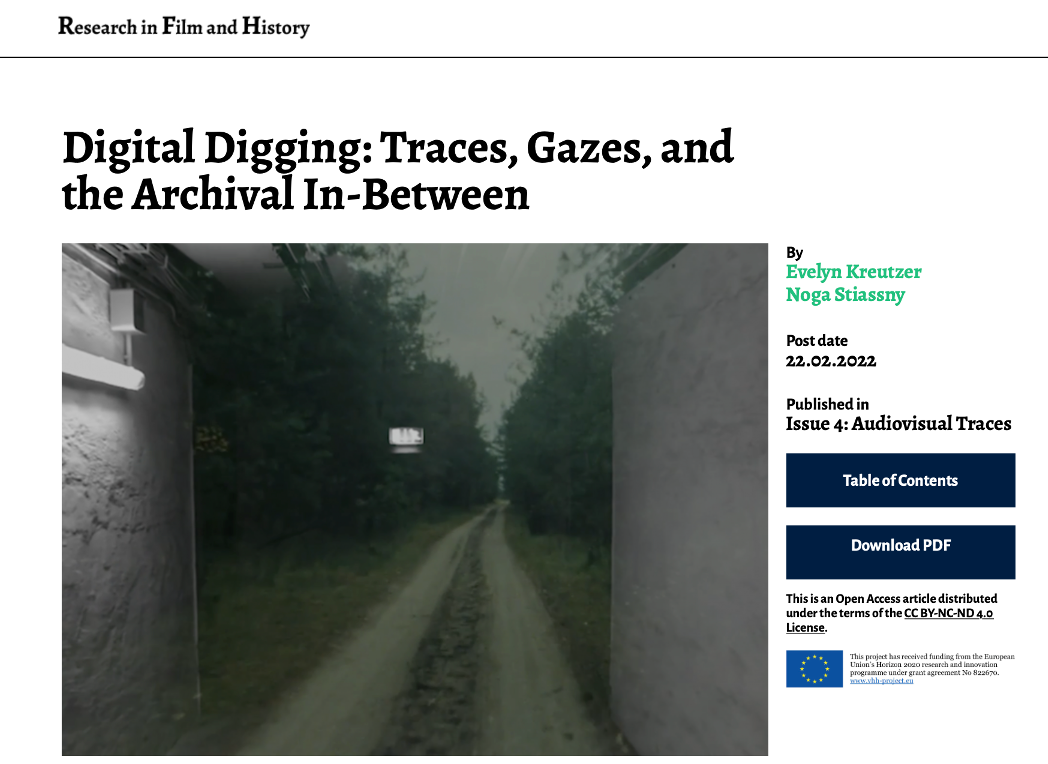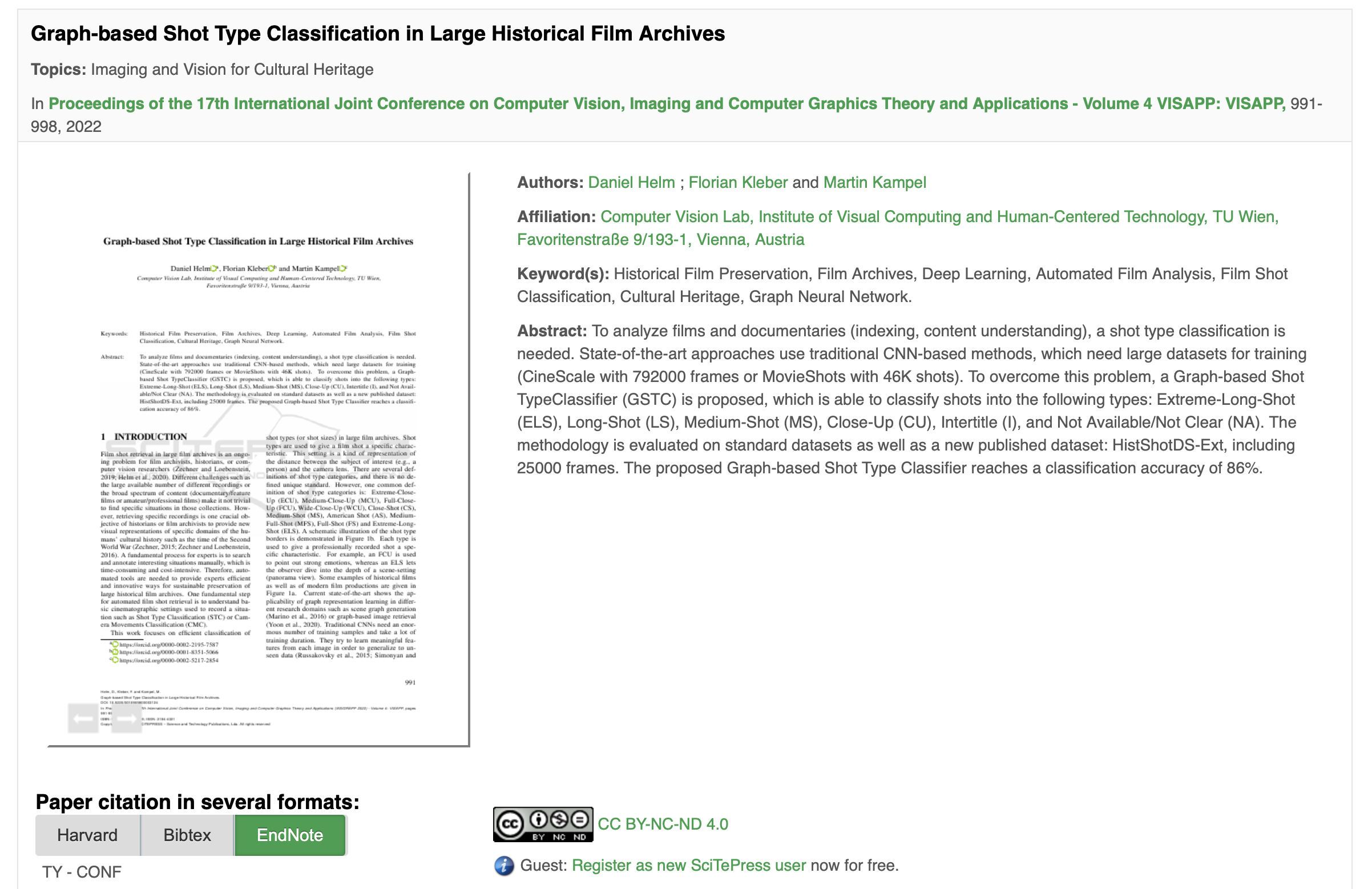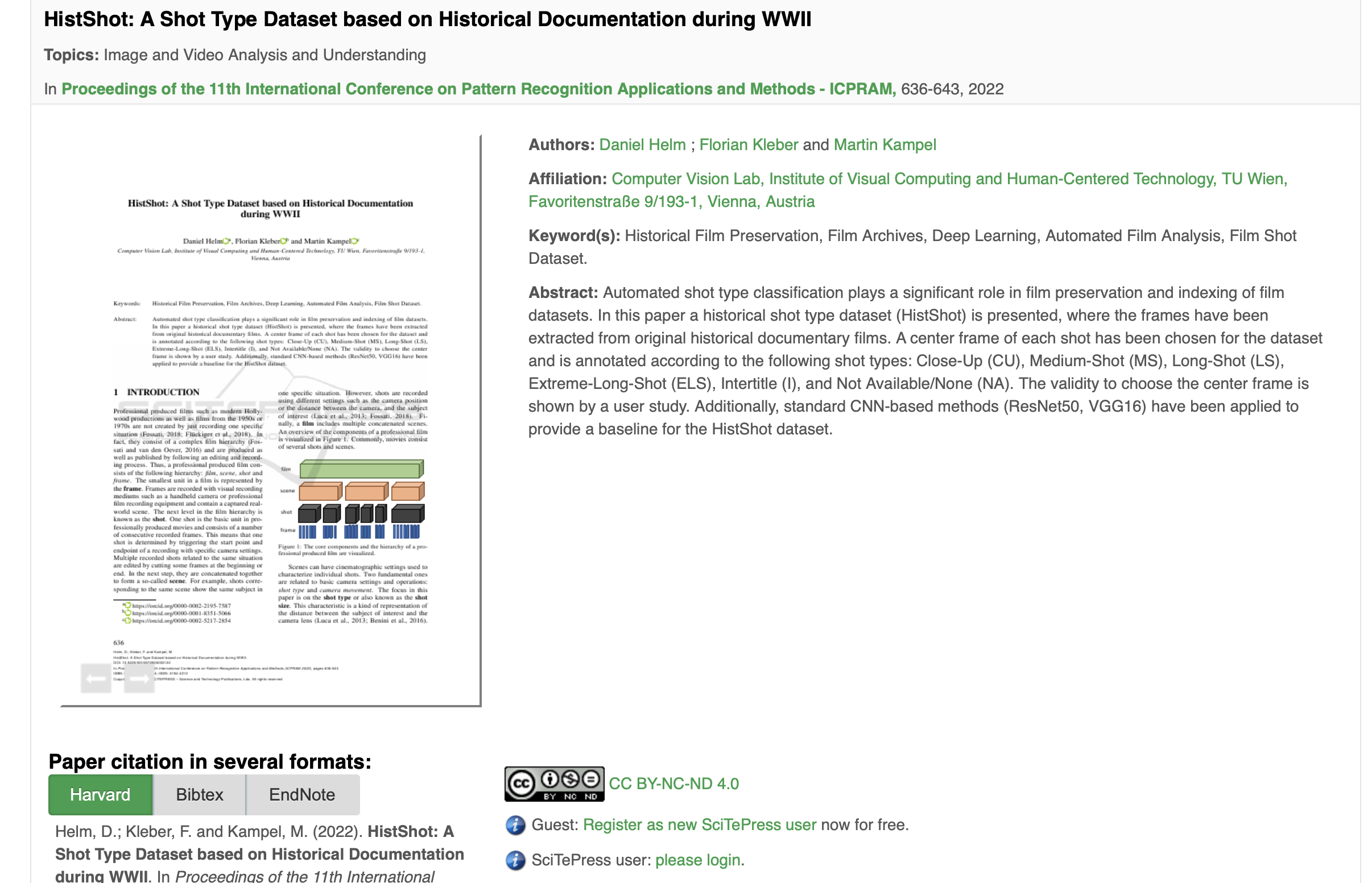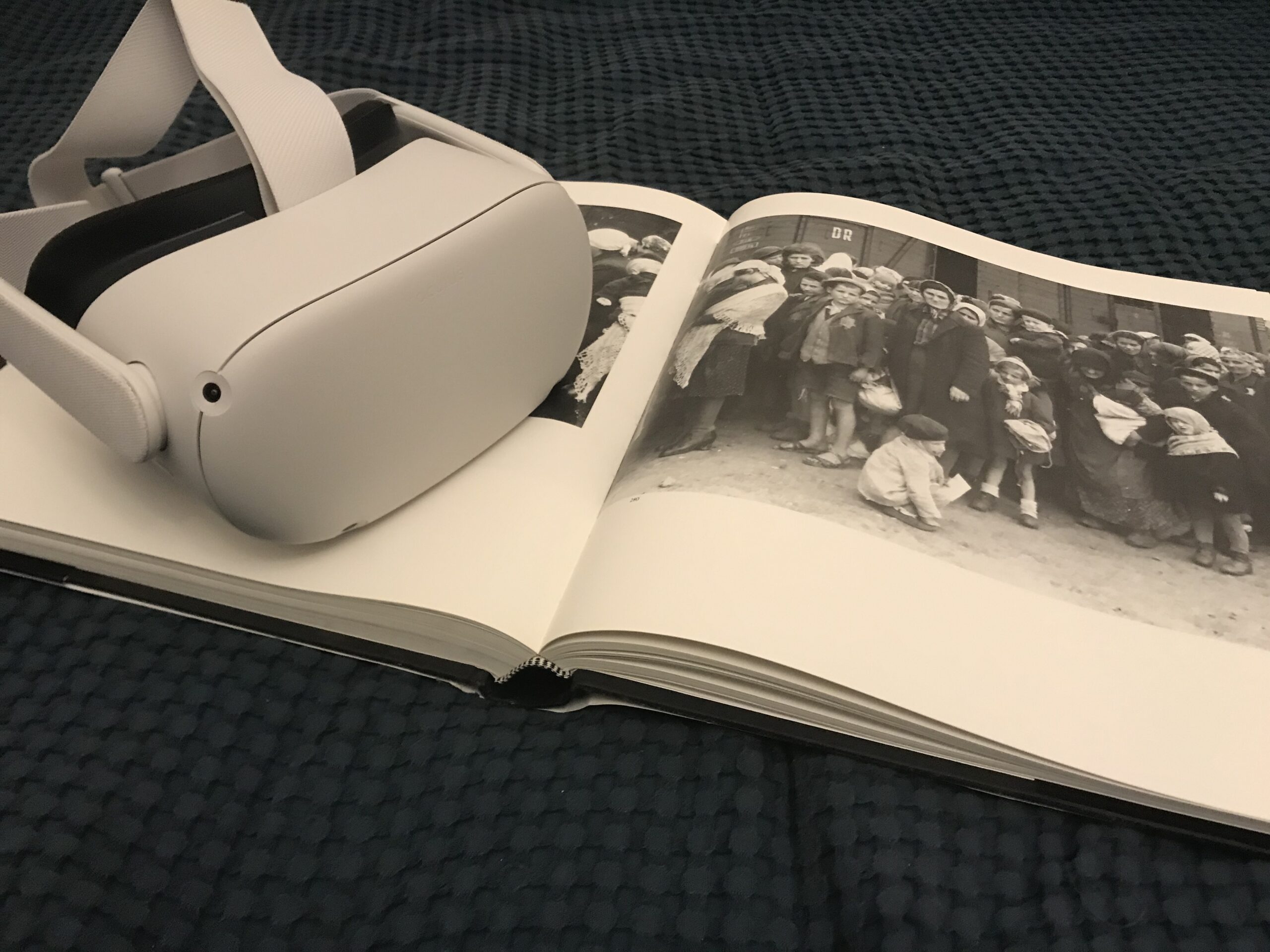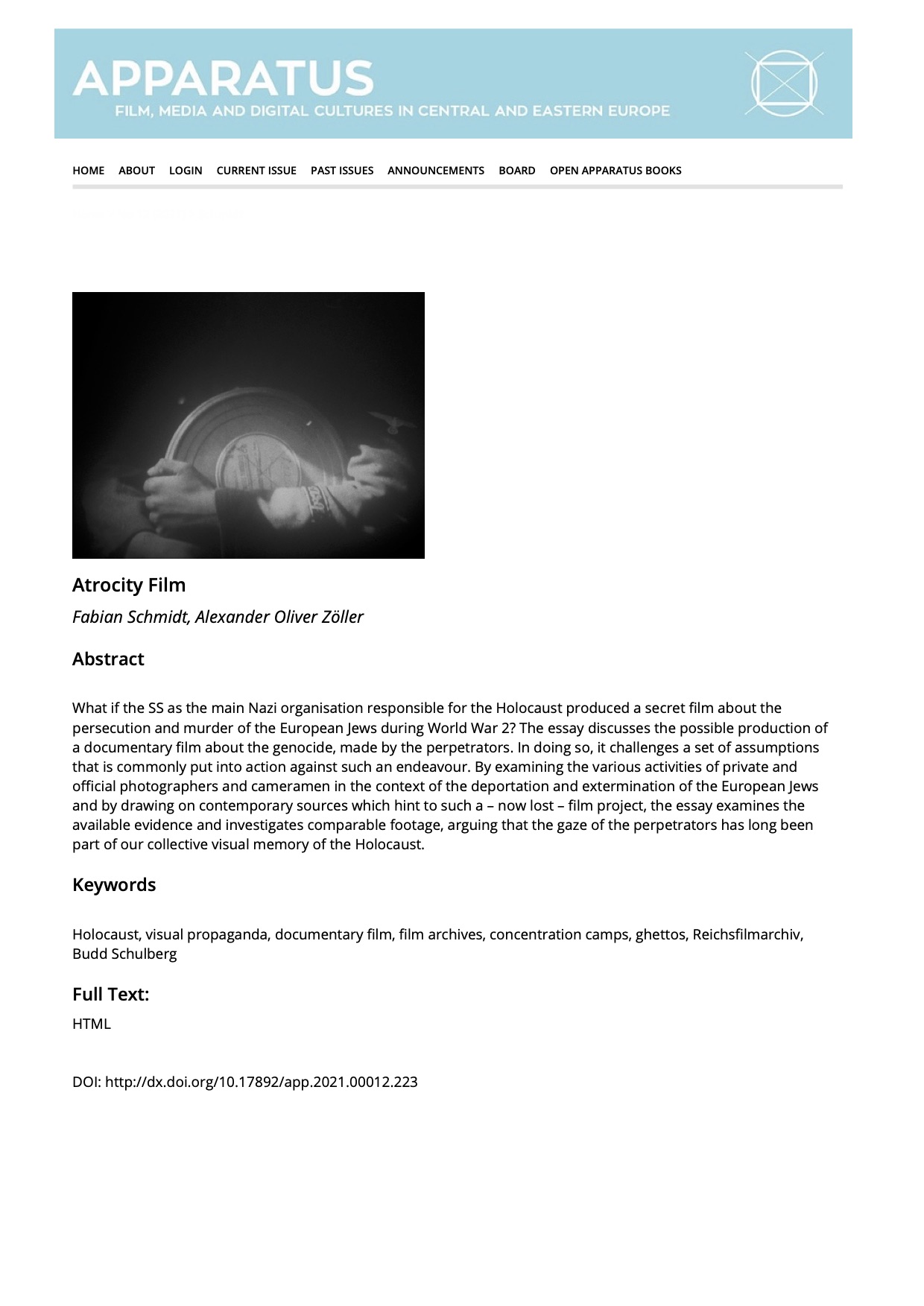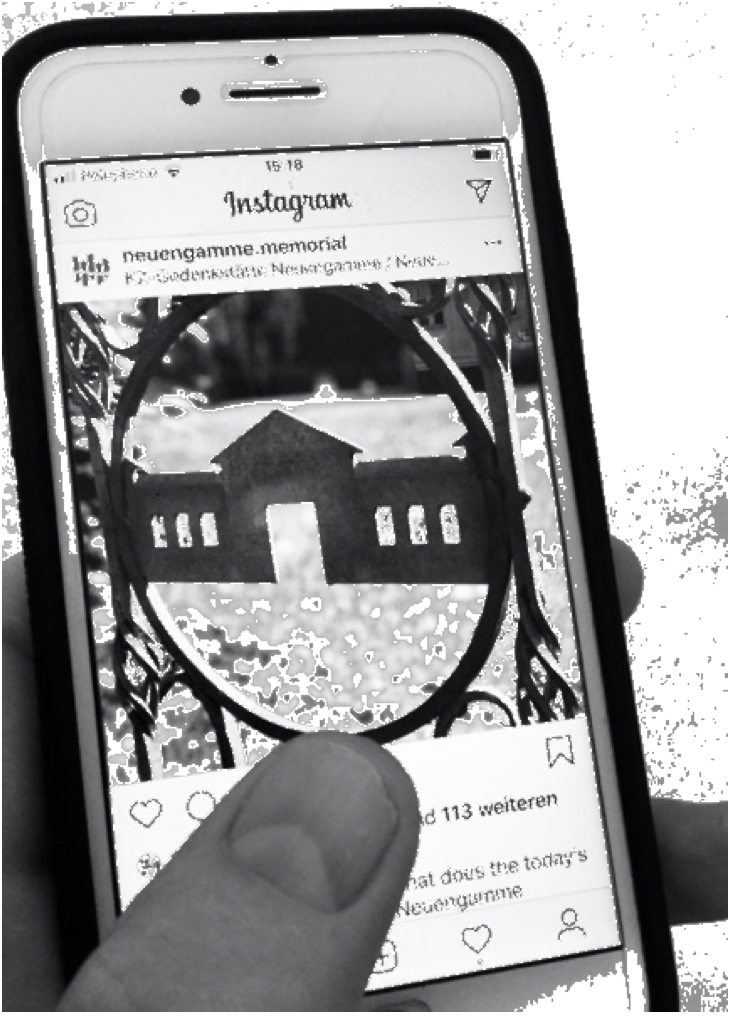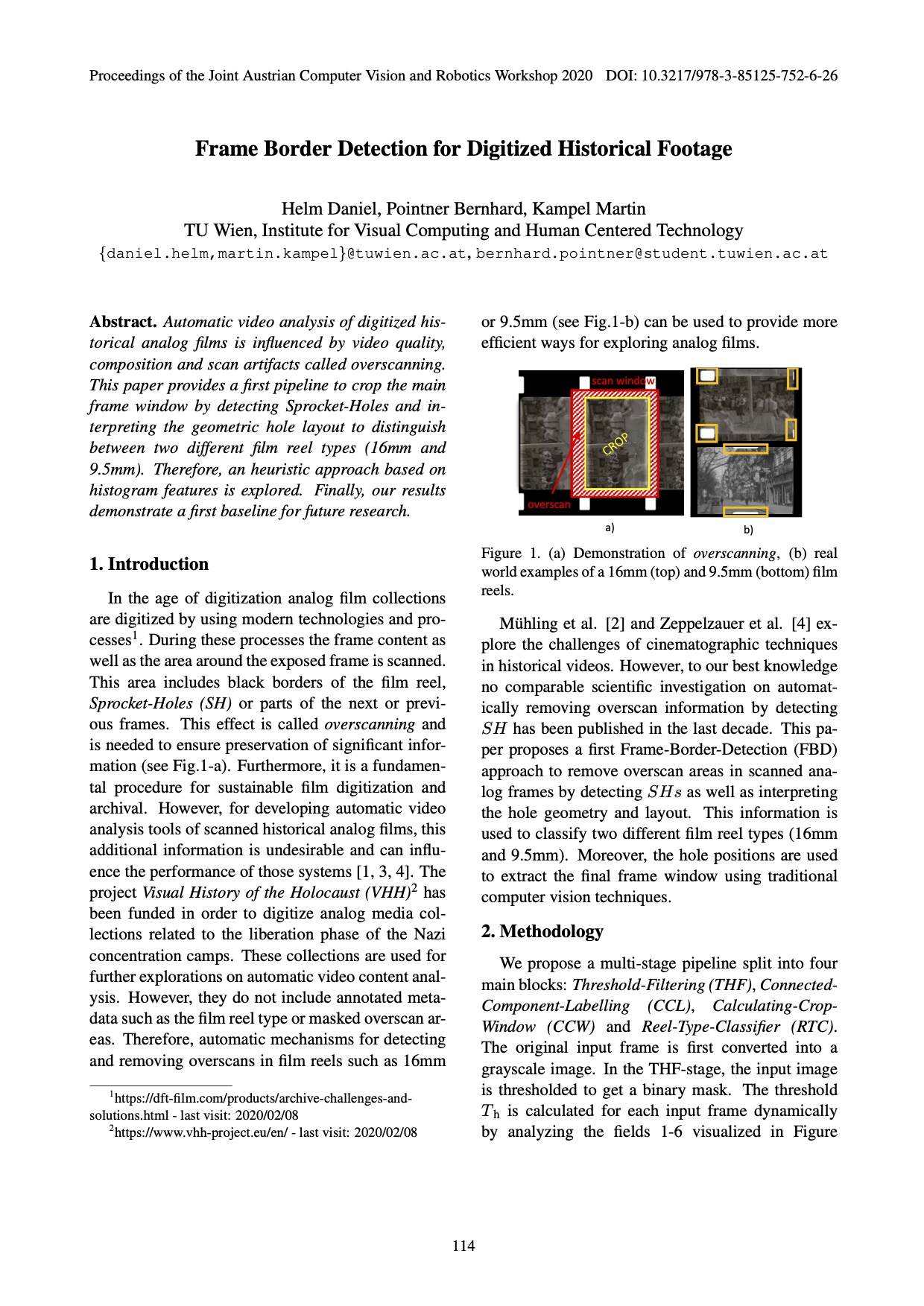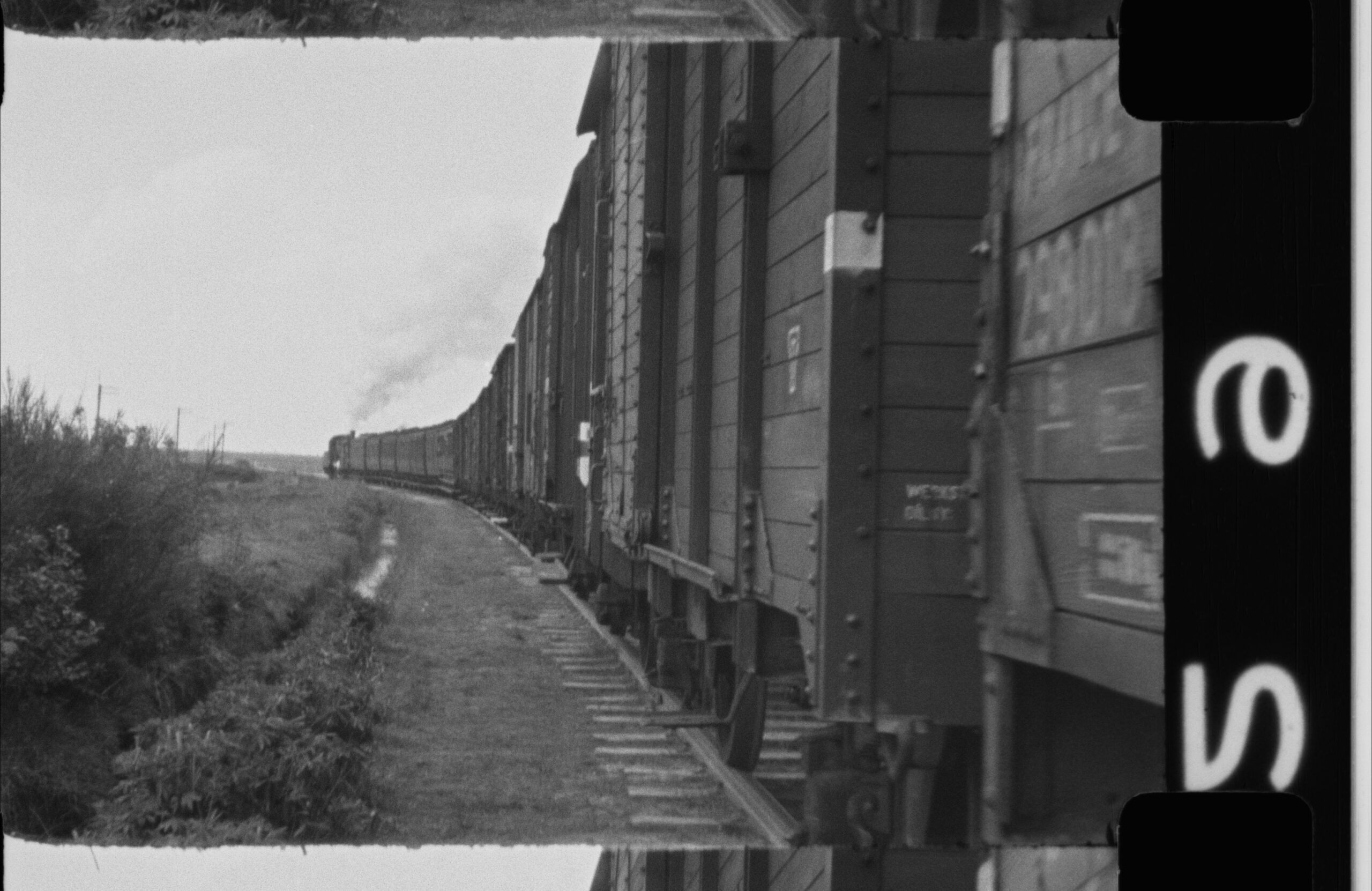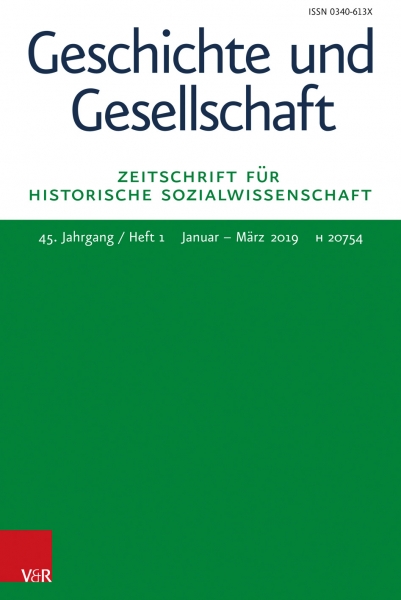People with Disabilities as Nazi Victims on Screen and Paper. A Close Reading of the 1943 Krasnodar Trial Records
Irina Rebrova, People with Disabilities as Nazi Victims on Screen and Paper: A Close Reading of the 1943 Krasnodar Trial Records, in: Research in Film and History, no. 6 (February 2025)ISBN: 2627-5848
This article examines the Soviet propaganda documentary film THE PEOPLE’S VERDICT / PRIGOVOR NARODA (1943) and the records of the Krasnodar open trial from 1943.
View Article
Forgotten. Film Documents from the Liberated Camps for Soviet POWs
Babette Quinkert, Forgotten. Film Documents from the Liberated Camps for Soviet POWs, in: Research in Film and History, no. 6 (February 2025)ISBN: 2627-5848
One of the main tasks of the Soviet cameramen was to document not only German crimes against the civilian population, but also against members of the Red Army who had been taken prisoner.
View Article
Depicting Atrocities. Ethics of Sharing Holocaust Images
Anna Högner, Fabian Schmidt, Depicting Atrocities. Ethics of Sharing Holocaust Images, in: Research in Film and History, no. 6 (February 2025)ISBN: 2627-5848
Engaging with Holocaust films and photographs presents complex ethical dilemmas.
View Article
Reflections on the Geography of the Holocaust Based on Soviet Film Footage. The Cases of Kremenets and Vyshnivets (July 1944)
Marie Moutier-Bitan, Reflections on the Geography of the Holocaust Based on Soviet Film Footage. The Cases of Kremenets and Vyshnivets (July 1944), in: Research in Film and History, no. 6 (February 2025)ISBN: 2627-5848
The article looks at a Soviet film shot at the time of the liberation of Western Ukraine, and seeks to identify the locations and reconstruct the events by cross-referencing this film footage with maps, pre-war photographs, testimonies from survivors and neighbors, and archives.
View Article
Soviet Footage from the 1940s and the Holocaust at Babyn Yar, Kyiv
Karel Berkhoff, Soviet Footage from the 1940s and the Holocaust at Babyn Yar, Kyiv, in: Research in Film and History, no. 6 (February 2025)ISBN: 2627-5848
In the 1940s, film footage was recorded at the ravine of Babyn Yar, the main Holocaust site in Kyiv.
View Article
Filming Auschwitz in 1945: Osventsim
Tal Bruttmann, Filming Auschwitz in 1945: Osventsim, in: Research in Film and History, no. 6 (February 2025)ISBN: 2627-5848
The film made by Soviet operators at Auschwitz following the discovery of the camp by the 1st Ukrainian front plays a central role in the construction of memory and representations of the site.
View Article
Soviet Film Footage and Professional Practices (1941–1945)
Irina Tcherneva, Soviet Film Footage and Professional Practices (1941–1945), in: Research in Film and History, no. 6 (February 2025)ISBN: 2627-5848
The documentary footage taken by the Soviets as they uncovered war crimes in the USSR, the Baltic states, Poland, Czechoslovakia, Germany and Hungary reveals a seminal tension between the media coverage of acts of violence and the expert use of images as evidence.
View Article
Towards a History of Soviet Film Records (Kinoletopis')
Valérie Pozner, Towards a History of Soviet Film Records (Kinoletopis'), in: Research in Film and History, no. 6 (February 2025)ISBN: 2627-5848
This article looks at the specific features of Soviet audiovisual archives showing traces of the Holocaust.
View Article
A Travelling Archive. Tracing Soviet Liberation Footage
Fabian Schmidt, Tobias Ebbrecht-Hartmann, A Travelling Archive: Tracing Soviet Liberation Footage, in: Research in Film and History, no. 6 (February 2025)ISBN: 2627-5848
The study delves into the image migration of liberation films shot by Soviet camera teams in the concentration camps Auschwitz and Majdanek.
View Article
Zinovii Tolkachov’s Graphics from the Auschwitz-Birkenau and Majdanek Death Camps. Testimonial Works, Viewer’s Perception, and Uses in Political Propaganda
Glib Vysheslavsky, Zinovii Tolkachov’s Graphics from the Auschwitz-Birkenau and Majdanek Death Camps. Testimonial Works, Viewer’s Perception, and Uses in Political Propaganda, in: Research in Film and History, no. 6 (February 2025)ISBN: 2627-5848
The article analyzes the circumstances of the creation of the graphic series Majdanek, Flowers of Auschwitz, and Auschwitz by the artist Zinovii Tolkachov (1903–1977) about the camps that the author visited as a correspondent after their liberation.
View Article
Virtual Topographies of Memory: Liberation Films as Mobile Models of Atrocity Sites
Tobias Ebbrecht-Hartmann, Fabian Schmidt, Virtual Topographies of Memory: Liberation Films as Mobile Models of Atrocity Sites, in: Lucie Česálková et al. (eds.), Non-Fiction Cinema in Postwar Europe: Visual Culture and the Reconstruction of Public Space. Amsterdam 2024, 399–424.ISBN: 9789048556625
How has Allied footage of liberated concentration camps shaped Holocaust memory by creating 'virtual topographies' of atrocity sites, influencing documentary films, digital reconstructions, and interactive media?
View Article
Playful Images: Visual Holocaust Memory, Digital Media, and the Visual Walkthrough Method
Lital Henig, Shir Ventura, Tobias Ebbrecht-Hartmann: Playful images: Visual Holocaust memory, digital media, and the visual walkthrough method, in: Memory, Mind & Media, vol. 3 (September 2024).This article presents a conceptual and methodological framework that focuses on the interactivity, creativity, and variability of Holocaust images in digital media.
View Article
Filmgeschichte als Visual History: Digitale Zugänge zu Europas Dunklem Erbe
Anna Högner, Filmgeschichte als Visual History: Digitale Zugänge zu Europas Dunklem Erbe, in: Katharina Günther, Stefan Alschner (Hg.), Sammlungsforschung im digitalen Zeitalter: Chancen, Herausforderungen und Grenzen, Göttingen 2024, 209–218.ISBN: ISBN 978-3-8353-5615-3
Die wachsende historische Distanz zum Holocaust stellt Museen und Gedächtniseinrichtungen vor neue Herausforderungen. Insbesondere digitale Umgebungen verlangen nach neuen Wegen, sich ins Verhältnis zu diesen Geschehnissen zu setzen.
View Article
The Impossibility of Simply Moving On: Essay On the Hamas Attack and the Atrocity Images It Generated
Deborah Hartmann, Tobias Ebbrech-Hartmann: The Impossibility of Simply Moving On: Essay On the Hamas Attack and the Atrocity Images It Generated (November 24, 2023). This essay has first been published in German in taz, November 11, 2023 (https://taz.de/Essay-zum-Angriff-der-Hamas/!5967960/). Translation by Jill Kreuer, Vienna.Its genocidal message with direct links to the Holocaust distinguishes October 7 from previous attacks on Israel.
View Article
Digital Visual History: Historiographic Curation Using Digital Technologies
Tobias Ebbrecht-Hartmann, Noga Stiassny, Lital Henig: Digital Visual History: Historiographic Curation Using Digital Technologies, in: Rethinking History, vol. 27, no. 2 (March 2023), 159–186.How can the visual heritage of past events been analyzed through the combination of historiographic practices of curation and digital technologies?
View Article
A Visual History of the Holocaust: Project Overview
Noga Stiassny, Lital Henig: Visual History of the Holocaust: Rethinking Curation in the Digital Age (Project Overview in Hebrew), in: Slil – Online Journal for History, Film and Television, vol. 15 (Winter 2022).The migration of images produces a multi-layeredness that has implications for the way Holocaust memory exists in the visual space. This article introduces how the project “Visual History of the Holocaust: Rethinking Curation in the Digital Age” responds to it.
View Article
The Auschwitz Tattoo in Visual Memory
Tobias Ebbrecht-Hartmann, Noga Stiassny, Fabian Schmidt: The Auschwitz Tattoo in Visual Memory. Mapping Multilayered Relations of a Migrating Image, in: Research in Film and History. Video Essays (November 2022), https://film-history.org/node/1129Mapping Multilayered Relations of a Migrating Image
View Article
Curating is Believing: Digital Art Exhibition and Holocaust Memory
Noga Stiassny: Curating is Believing: Digital Art Exhibition and Holocaust Memory, in: Jewish Film & New Media: An International Journal, vol. 10, no. 2 (Fall 2022), 258-272.This article explores the potential of digital exhibitions to enhance Holocaust memory for generations that soon will not have direct contact with survivors, positioning such exhibitions as an innovative educational tool. Focusing on the Nazi gas chambers—a negative symbol of Holocaust memory—as its case study.
View Article
HISTORIAN: A Large-Scale Historical Film Dataset with Cinematographic Annotation
Daniel Helm, Fabian Jogl, Martin Kampel, Historian: A Large-Scale Historical Film Dataset with Cinematographic Annotation, in: 2022 IEEE International Conference on Image Processing (ICIP), (October 2022), 2087-2091.ISBN: 978-1-6654-9620-9
Poster presented by Daniel Helm at the 29th IEEE International Conference on Image Processing (ICIP) 2022
View Article
Filmography of the Genocide: Official and Ephemeral Film Documents on the Persecution and Extermination of the European Jews 1933-1945
Fabian Schmidt, Alexander Oliver Zöller: Filmography of the Genocide: Official and Ephemeral Film Documents on the Persecution and Extermination of the European Jews 1933-1945, in: Research in Film and History. Audiovisual Traces, no. 4 (February 2022), S. 1–160.ISBN: 2627-5848
A comprehensive list of archival film material related to the genocide, including film materials which are only mentioned in contemporary sources, or which were only reported by witnesses after the war.
View Article
Digital Digging: Traces, Gazes, and the Archival In-Between
Evelyn Kreutzer, Noga Stiassny: Digital Digging: Traces, Gazes, and the Archival In-Between, in: Research in Film and History. Audiovisual Traces, no. 4 (February 2022), S. 1–13.ISBN: 2627-5848
Traces and gazes have become leading paradigms in dealing with the (visual) history of the Holocaust within academia.
View Article
Graph-based Shot Type Classification in Large Historical Film Archives
Daniel Helm, Florian Kleber, Martin Kampel, Graph-based Shot Type Classification in Large Historical Film Archives, in: Proceedings of the 17th International Joint Conference on Computer Vision, Imaging and Computer Graphics Theory and Applications, vol. 4 (February 2022), 991-998.ISBN: 978-989-758-555-5
To analyze films and documentaries (indexing, content understanding), a shot type classification is needed.
View Article
HistShot: A Shot Type Dataset based on Historical Documentation during WWII
Daniel Helm, Florian Kleber, Martin Kampel, HistShot: A Shot Type Dataset based on Historical Documentation during WWII, in: Proceedings of the 11th International Conference on Pattern Recognition Applications and Methods, vol. 1 (February 2022), 558-565.ISBN: 978-989-758-549-4
Automated shot type classification plays a significant role in film preservation and indexing of film datasets.
View Article
Erweiterte Orte: Überlegungen zur virtuellen Transformation von Gedenkstätten
Tobias Ebbrecht-Hartmann, Erweiterte Orte: Überlegungen zur virtuellen Transformation von Gedenkstätten, in: Medaon – Magazin für jüdisches Leben in Forschung und Bildung, vol. 15, no. 28 (2021), 1-5.ISBN: 1866-069X
Memorials function as media for the communication of history and are simultaneously augmented by (digital) media arrangements.
View Article
Atrocity Film
Fabian Schmidt, Alexander Oliver Zöller, Atrocity Film, in: Apparatus. Film, Media and Digital Cultures in Central and Eastern Europe, no. 12 (2021), 1-80.ISBN: 2365-7758
What if the SS as the main Nazi organisation responsible for the Holocaust produced a secret film about the persecution and murder of the European Jews during World War 2?
View Article
Bildraum und Ausstellungsraum. Reenactment und Immersion?
Ulrike Koppermann, Bildraum und Ausstellungsraum. Reenactment und Immersion?, in: Visual History, 22.02.2021, https://visual-history.de/2021/02/22/bildraum-und-ausstellungsraum-reenactment-und-immersion/At museums and memorial sites, the interpretation of a photograph greatly depends on its presentation, but on closer examination, some spatial arrangements raise ethical questions.
View Article
Commemorating from a distance: the digital transformation of Holocaust memory in times of COVID-19
Tobias Ebbrecht-Hartmann, Commemorating from a distance: the digital transformation of Holocaust memory in times of COVID-19, in: Media, Culture & Society (December 2020), 1-18.As Holocaust memorials had to close their sites in the wake of the COVID-19 pandemic, this article explores how they utilized digital technology and social media platforms for commemorating the Holocaust from a distance.
View Article
Overscan Detection in Digitized Analog Films by Precise Sprocket Hole Segmentation
Daniel Helm, Martin Kampel, Overscan Detection in Digitized Analog Films by Precise Sprocket Hole Segmentation, in: George Bebis et al. (eds.), Advances in Visual Computing. ISVC 2020. Lecture Notes in Computer Science, vol. 12509 (Cham: Springer, 2020), 148-159.ISBN: 978-3-030-64556-4
Overscan Detection for Digitized Historical Footage
View Article
Frame Border Detection for Digitized Historical Footage
Daniel Helm, Bernhard Pointner, Martin Kampel, Frame Border Detection for Digitized Historical Footage, in: Proceedings of the Joint Austrian Computer Vision and Robotics Workshop (August 2020), 114-115.ISBN: 978-3-85125-752-6
Frame Border Detection for Digitized Historical Footage
View Article
The Westerbork Film Revisited: Provenance, the Re-Use of Archive Material and Holocaust Remembrances
Fabian Schmidt, The Westerbork Film Revisited: Provenance, the Re-Use of Archive Material and Holocaust Remembrances, in: Historical Journal of Film, Radio and Television, no. 40/4 (2020), 702-731.ISBN: 1465-3451
The essay analyses modifications of the Westerbork footage that were applied most likely during the 1980s and discusses ethical questions about dealing with archival footage.
View Article
Video Shot Analysis for Digital Curation and Preservation of Historical Films
Daniel Helm, Martin Kampel, Video Shot Analysis for Digital Curation and Preservation of Historical Films, in: Proceedings of the 17th Eurographics Workshop on Graphics and Cultural Heritage (November 2019), 25-28.ISBN: 978-3-03868-082-6
Video Shot Analysis for Digital Curation and Preservation of Historical Films
View Article
Liberated on Film: Images and Narratives of Camp Liberation in Historical Footage and Feature Films
Ulrike Weckel, Liberated on Film: Images and Narratives of Camp Liberation in Historical Footage and Feature Films, in: Research in Film and History. Research, Debates and Projects 2.0, no. 2 (October 2019), 1-21.ISBN: 2627-5848
What is Allied footage of camp liberations really able to show about the encounter between liberators and liberated, and in which ways can feature films tell historically more accurate stories?
View Article
Shot Boundary Detection for Automatic Video Analysis of Historical Films
Daniel Helm, Martin Kampel, Shot Boundary Detection for Automatic Video Analysis of Historical Films, in: Marco Cristani, Andrea Prati, Oswald Lanz, Stefano Messelodi, Nicu Sebe (eds.), New Trends in Image Analysis and Processing – ICIAP 2019. Lecture Notes in Computer Science, vol. 11808 (Cham: Springer, 2019), 137-147.ISBN: 978-3-030-30754-7
Shot Boundary Detection for Automatic Video Analysis of Historical Films
View Article
Plädoyer für Rekonstruktionen der Stimmenvielfalt. Rezeptionsforschung als Kulturgeschichte (A plea for reconstructing the variety of voices. Reception studies as cultural history)
Ulrike Weckel, Plädoyer für Rekonstruktionen der Stimmenvielfalt. Rezeptionsforschung als Kulturgeschichte (A plea for reconstructing the variety of voices. Reception studies as cultural history), in: Geschichte und Gesellschaft – Zeitschrift für Historische Sozialwissenschaft, vol. 45, no. 1 (April 2019), 120-150.ISBN: 0340-613X
How and on the basis of which primary sources can historians study audiences’ receptions?
View Article
Challenging the Perpetrators’ Narrative: A Critical Reading of the Photo Album ‘Resettlement of the Jews from Hungary’
Ulrike Koppermann, Challenging the Perpetrators’ Narrative: A Critical Reading of the Photo Album ‘Resettlement of the Jews from Hungary’, in: Journal of Perpetrator Research, vol. 2, no. 2 (2019), 101-129.ISBN: 2514-7897
Analyzing an iconic photo album produced by SS-photographers at the Auschwitz II (Birkenau) concentration camp, this paper explores the controversial notion of the ‘perpetrators‘ perspective’.
View Article
